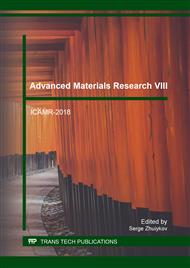p.92
p.99
p.106
p.115
p.119
p.124
p.131
p.136
p.140
Development for Wound Dressing Based on Blended Chitosan and Gelatin Hydrogels
Abstract:
Chitosan and gelatin are potential wound dressing materials. However, chitosan takes too much time to degrade and gelatin degrades too fast. As a result, chitosan and gelatin are blended to adjust their degradation rate. The degree of degradation test by means of weight loss and thermogravimetric analyzer after being incubated with lysozyme, which is a common enzyme in body fluid. Optical microscopy was used to observe the materials morphology after immersed in water. Finally, fibroblast cells were cultured with various material extracts to examine cell adhesion In Vitro. Cell adhesion tests showed there are no negative effect on cells. Therefore, there is no cell toxicity of chitosan on cells. Chitosan and gelatin can be promising wound dressing raw materials in future.
Info:
Periodical:
Pages:
119-123
Citation:
Online since:
March 2018
Keywords:
Price:
Сopyright:
© 2018 Trans Tech Publications Ltd. All Rights Reserved
Share:
Citation:


